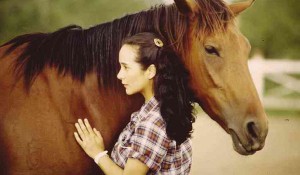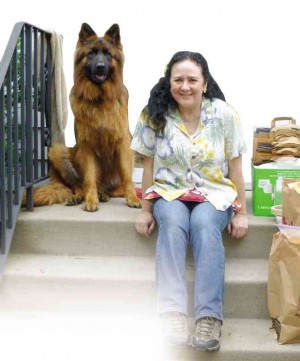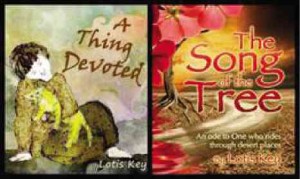Dolphy was the sunshine of her life
She was reluctant to reminisce about her time as an actress—and it was understandable. Those heady days in the limelight, once a pivotal part of Lotis Key’s life, now seem a lifetime away.
Although martial-law babies are sure to remember her as one of Comedy King Dolphy’s loveliest leading ladies, Lotis has successfully reinvented herself as book author.
She has authored two eBooks—“A Thing Devoted” and “The Song of the Tree.” She also writes a blog (www.lotiskey.com), one filled with humorous, heartfelt and insightful recollections.
This reinvention is but the latest in a life that has witnessed numerous transformations or, as she puts it, “adventures” since leaving the country in the 1980s.
In her official blog bio, she describes herself as “a former horse breeder, tropical-forest tour guide, restaurateur, third-world church planter [who also] worked in an orphanage and ran a ministry that put inner-city children through school.”
Article continues after this advertisementLotis founded Messengers, a Christian theater group based in Minneapolis. “For 12 years, the Messengers toured the United States, Canada and Asia. We visited the Philippines once and
Article continues after this advertisementhad a presentation at Malacañang.”
Moving from acting to producing and directing was nothing less than a paradigm shift, she said. “For one job, you should be a princess; for the other, a slave.” As an actress, she clarified, all she needed to do was show up knowing her lines. Once she had “mastered” those twin tasks, “I could just sit in a corner reading while getting a pedicure.”
Being a producer/director required multitasking skills and zero vanity. “I was in charge of everything—writing, choreography, line rehearsals, advertising, casting, set construction, costumes, travel logistics. I was babysitter, crying shoulder, ego massager.”
It was far from glamorous. “I fed the hungry and washed the dishes after. I never took a bow, never received compliments. Those are for the actors. So why did I do it? I am intensely visionary. Plus, I always like being the head, not the tail.”
She could never resist the lure of the stage. She started acting in school plays, in then St. Paul College Manila, at age 12. “I worked with (educator and playwright) Onofre R. Pagsanghan,” Lotis recalled.
Influential figure
Around the same time, the young Lotis Melisande, who had just arrived from the US with her sister and mother, met an influential figure in her life—Father James Reuter, Philippine performance arts pioneer.
Her mother had just divorced Lotis’ “tall, golden-haired, blue-eyed” American father. The girl found a surrogate dad in the Jesuit priest who was himself tall, blond and blue-eyed.
As she wrote in her blog: “[Fr. Reuter] encouraged me to speak and communicate my thoughts. He pushed me to develop my voice. He made me understand that, even if I didn’t fit in, I was valuable to him.”
Although she never acted in the Jesuit’s plays, “he ran the competition where I became Juliet of the Philippines. (Actor-singer) Cocoy Laurel was my [Romeo].”
Between convent school and stage work, she joined and placed second runner-up in the 1967 Binibining Pilipinas pageant, the year Pilar Pilapil won the crown. “I was 13 and had to pass for 18.” (The winner, it turned out, was underaged, too.)
Lotis’ big movie break came four years later, via Lino Brocka’s “Stardoom” in 1971. Brocka was “my best friend when we were young.” They worked under Cecile Guidote (now Alvarez) in the Philippine Educational Theater Association.
“It was a wonderful, crazy time,” Lotis recalled. Brocka, who would be National Artist years later, “could talk your ears off,” she said. “After rehearsals, I would patiently listen for hours while Lino told me his stories, acting out all the parts.”
Even then, she knew her buddy was destined for greatness. “He was a total unknown… when he confided in me his dream to direct a film that he would call ‘Tinimbang Ka Ngunit Kulang.’ It sounded weird and gory and captivating. I told him it would be a big movie, and would make him famous.”
She did “Ang Mahiwagang Daigdig ni Pedro Penduko,” directed by another friend, Celso Ad. Castillo in 1973.
Hollywood movies
That same year, she made two Hollywood movies with another future National Artist, Eddie Romero—“Black Mama, White Mama” and “The Woman Hunt.”
“Direk Eddie often [recruited] me as an extra, just for fun,” she said. “He was a family friend. During World War II, he was incarcerated with my mother’s first husband in Fort Santiago.”
She said she did “Stardoom” for the love of Brocka. “He practically begged me to play his villain. I didn’t even get paid… and then well, somehow I met Dolphy and…”
And we’re getting ahead of the story.
Although it sounds as if “Stardoom” irrevocably altered the course of her life, she actually met Dolphy when she was 15. “I made my first movie with him (‘Fung Ku’ in 1973) long after [that],” she said.
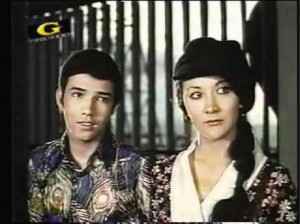
IN “STARDOOM” she was a villainess who made the life of Walter Navarro’s character miserable. YouTube
The popular comedian had been invited to watch a school play where Lotis was in the cast. She related: “We were introduced backstage. I was eating chocolate cake. Later, he approached my mother to ask if I could be his leading lady in his next movie. I was 15; my mom, of course, refused.”
Although they wouldn’t see each other for a while after that, Dolphy sent a chocolate cake on her birthday “every year, for the next several years.”
After “Stardoom,” she remembered, “Someone invited me to a dinner party and Dolphy was the host.”
Lotis was clueless about local show biz at the time. “All I knew about him was his name. I thanked him for the chocolate cakes. He said I could have one every day, if I made a movie called ‘Fung Ku’ with him. Naturally, I said yes.”
She made several movies with Dolphy from 1973 to 1980—from “Biyenan Ko ang Aking Anak” and “Captain Barbell” to “Darna Kuno” and “Max en Jess.” From mere screen partner, he became “the sunshine of my life.”
When Dolphy passed away on July 10 last year, Lotis was quoted in a TV interview as saying: “Somewhere in time, we’ll always be connected—two giggling kids in blue jeans. In my old age now, I think of you and smile.”
In the Dolphy biography “Hindi Ko Ito Narating Mag-Isa,” by Bibeth Orteza, Lotis said she left the Philippines because of “an offer to work with horses in the Australian outback.” After that, she moved back to the US, where she now resides with her husband of 30 years.
In her early years there, she signed up with talent agencies and did TV and radio commercials, TV programs and movies. Most notably, she played a nun in the Christian Slater-Marisa Tomei movie “Untamed Heart,” directed by Tony Bill, in 1993.
Memorable
She had just a “teensy part” in the Hollywood movie, she demurred, and said it was memorable only because it helped her secure a Screen Actors’ Guild card.
She recalled getting to talk with Slater on the set. “On and off for three days, and I didn’t realize it was him!” she quipped. “He was hanging out on the set… he brought a dog… and
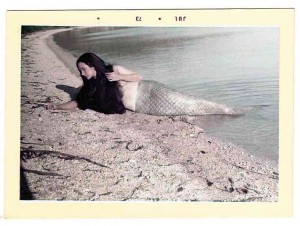
LOTIS played the title role in the Hong Kong film “Beba the Mermaid” in 1973 (above). She was a mermaid again in Celso Ad. Castillo’s “Ang Mahiwagang Daigdig ni Pedro Penduko” that same year.
because he always stood near the director, I thought he was the dog walker.”
That chance interaction with the Hollywood actor led to a belated realization: “Almost all my life, people have been disappointed when they meet me in person. I’m never as pretty as they think I should be. Never as tall. Never as fair-skinned.”
Blame the silver screen. “Let me say now that, in person, movie actors are no better looking… than anyone else. They’re not mesmerizing. They don’t glow in the dark. They just photograph better.”
With the spell broken, her decision to leave the biz for other fields seemed less daunting. “I wanted to see what else I could do in the big, bad world. Making movies was a bit too much fun,” she confessed. “I became restless about applying myself to the process of growing up.”
Thus was rekindled a life-long romance with the written word.
Shifting from collaborative undertakings, like theater, to the more solitary endeavor that is writing proved effortless for Lotis. “Although I can enjoy people and high chaos, I am a loner by nature,” she admitted.
No dark secrets
“My life has been filled with a lot of enchanting people, but I’m not at all that interesting myself. I have no dark secrets, no skeletons in my closet, no horrifying secrets.”
If she had something to hide, she volunteered, “It’s that I’m not a very exciting person.” The anxiety about disappointing people persists. “I’m fairly quiet and reserved. Unless it’s for a visionary project, you can hardly drag me out of the house,” she said. “I write full time now. My work is available on Amazon, Barnes and Noble, Kobo and various other online sellers.”
She called herself an “indie crossover Christian novelist… my fiction rides along theological lines, even when it doesn’t talk directly about God.”
She has always been “deeply interested” in theology. “What does God want? Where did He come from? Does He care about us? And if He does, why do bad things happen? A common thread in my stories is the human struggle to trust God through personal pain. I love to write about ordinary people trying to survive life while hanging on to a belief that [out there] somewhere is a God who cares.”
She finds it fascinating that storytelling, an ancient art form, has survived in this high-tech age. “eBooks are amazing,” she said. “No paper, no ink, no printing, shipping and storage costs; no portability issues. No middleman between author and readers.”
She’s not saying that eBooks are better than paperbacks.
“I don’t think printed books will disappear, but perhaps they will become like [vinyl] albums. Some people will still play and collect them as reminders of another time.”
Speaking of which, what keeps her coming back (twice a year) to the Philippines? In a blog post, she rhapsodized about her mother’s country: “There is no other place in the galaxy where my highly developed sense of the ridiculous can be so perfectly exercised. No other place where, if I died, it would be from laughing.”
Yes, another enduring love affair. “It’s because of the people—ridiculously funny, intuitive, clever, resourceful. You don’t meet people like Filipinos anywhere else. No one understands kuwentuhan, food, and the complexity of life like a Filipino. No one is related to everyone else like a Filipino. We’ve heard of six degrees of separation; in the Philippines, there are only two degrees.”
